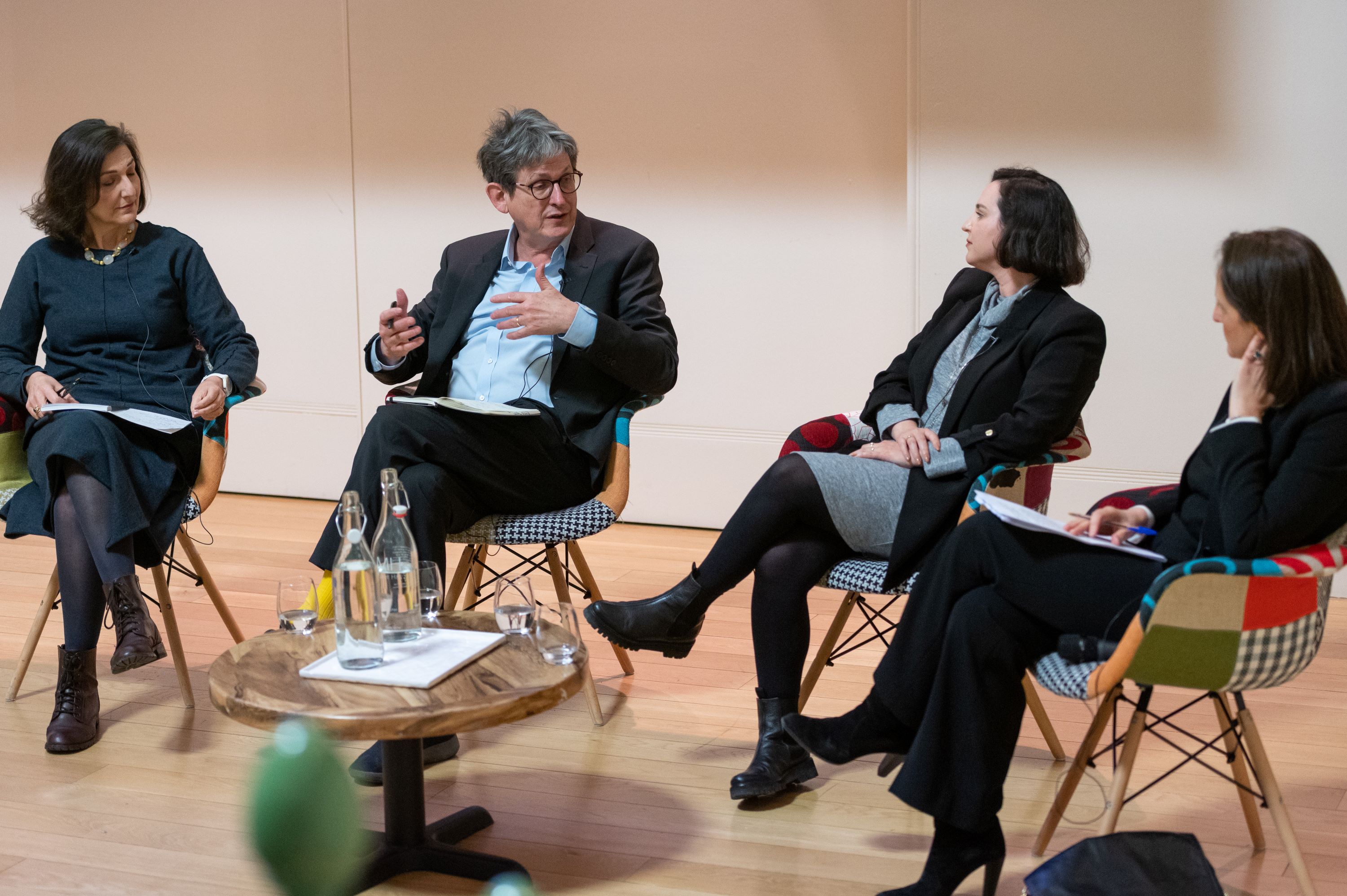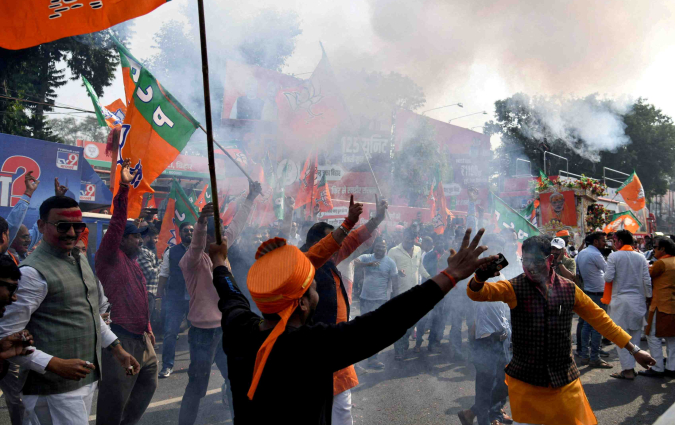"You cannot have moral clarity without factual truth": A panel on impartiality, newsroom diversity and trust in news

Panel discussion from our Reuters Memorial Lecture. Credit: John Cairns
It is important to be trustworthy in news, but also to appear trustworthy, Reuters Editor-in-Chief Alessandra Galloni highlighted at the 2022 Reuters Memorial Lecture.
The lecture was followed by a panel moderated by our Chair Alan Rusbridger, with Noa Landau, a former Reuters Institute fellow and current deputy editor of Israeli newspaper Haaretz, and Scheherazade Daneshkhu, Director of Editorial Talent at the Financial Times.
For Alessandra, appearing trustworthy requires objectivity and transparency on the part of the journalist. To achieve this, newsrooms need to be diverse to make sure they cover as many perspectives as there are in the world outside them. “The moment that journalists wade into the debate, they become part of the story,” she said. “That potentially undermines the trust in us, because if we show we have an agenda, then we become less credible.”
Referring to an article by the Reuters Institute director Rasmus Kleis Nielsen, Alessandra added: “I really think you cannot have moral clarity without factual truth.” Only once you have a foundation of fact, Alessandra said, then you can have opinions.
Noa didn’t share the same view. She said that journalists should beware of ‘false objectivity’, and acknowledge that sometimes they do have an opinion. “Sometimes, part of transparency is being aware that we do have an agenda,” she said.
Newsroom leadership also has a role to play in this debate. Scheherazade said that in her newspaper it’s the editor’s job to interrogate the reporter, to make sure they are presenting a balanced view of the facts, and to challenge what might be their personal bias.
Journalists on social media
Stephen Dunbar-Johnson, President at International of The New York Times Company, asked about the danger of journalists’ social media presence. Scheherazade pointed to the FT’s social media guidelines and said that, while journalists may like to build up a following on platforms like Twitter, their accounts mustn’t stray into controversy or get involved in fights.
Alessandra agreed with this view. “Whatever you put on Twitter could compromise your ability to report,” she said. Alessandra encourages her reporters at Reuters to be careful by asking them to think about the worst possible headline someone could write about the tweet they want to post.
The situation is different for younger journalists, Noa said, as they need to use social media to build a name for themselves and secure an audience for their stories. To an extent, she said, young journalists have to have a social media presence to succeed.
The need of diversity
Noa pointed out that objectivity from one person’s point of view may not be the same from someone else’s perspective. The antidote to this, Alessandra said, is increased diversity in the newsroom.
“We’re not going to change human nature. But what we can do is change our newsrooms, so that that diversity of perspective emerges,” she said. She gave the example of how, as a finance reporter, even without consciously choosing to interview women, she found she would be drawn to the woman in the room.
For Noa and Haaretz, increasing newsroom diversity means including more Palestinian voices. Their efforts at inclusion have already had an effect. Noa pointed to the 2021 Israel-Palestine crisis as a situation in which Palestinian journalists’ contributions were crucial.
New frontiers
Another aspect of trust in news, and a growing field within journalism, is data. Many newsrooms are expanding their data journalism, including the FT and Reuters.
Along with data, another emerging feature of modern journalism is user-generated content. Especially in the context of the ongoing war in Ukraine, we are seeing more and more videos and photographs taken, posted and shared by people who are not journalists.
The key is to have a machine that verifies the enormity of visuals coming in, carrying out due diligence such as checking the source and contacting others on the scene, Alessandra said.
Journalist fellow Mehraj Lone asked about Reuters partnership with ANI in India, a news outlet that has been accused of a pro-Modi bias and of spreading anti-Muslim fake news. Reuters Global Head of Video and Pictures John Pullman replied that ANI provides Reuters with video that Reuters then independently verifies and only uses a selection of. “It’s a very particular, careful relationship,” he said.
The checks non-Reuters content must pass are not limited to fact, but also tone and fairness, Alessandra said.
Anonymous sources and legal threats
Journalists face a difficult balancing act when it comes to anonymous sources. "We strive to have on-the-record sources,” Alessandra said. “I'm a firm believer that if you do a lot of your homework first and present your sources with the evidence, they will talk because that's how human nature works." She recognised that anonymous sources are important to journalism, in certain investigations. But she said that the best sources were the ones that go on the record.
Christopher Patten, Chancellor of the University of Oxford, asked about the use of legal tools, such as Slapps, against journalists. These have been used by Russian oligarchs to discourage criticism and investigative reporting concerning them.
Around the world there are increased attempts to criminalise the mistakes of journalists, Alessandra noted. This, she said, is very dangerous as sometimes journalists do make mistakes and have to self-correct. By criminalising these mistakes, this may result in journalists self-censoring.
The future
The panellists were optimistic about the future, and about the enduring desire for good quality journalism that combines traditional principles of the profession with modern digital methods.
Naming data, social media, fact-checking and more, Alessandra said: “You can come into journalism from so many different areas now, and with so many different tools. The pie has become bigger, it’s a much more exciting space than when I started.”
In every email we send you'll find original reporting, evidence-based insights, online seminars and readings curated from 100s of sources - all in 5 minutes.
- Twice a week
- More than 20,000 people receive it
- Unsubscribe any time






